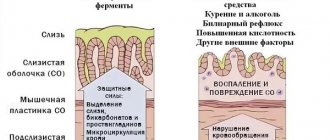Home | About us | Delivery | Advertisers | Login | Registration
Delivery on Sundays and holidays does not work!
- Medicines
- dietary supplementsVitamins
- Categories from A to Z
- Brands from A to Z
- Products from A to Z
- Medical equipment
- beauty
- Child
- Care
- Honey products appointments
- Herbs and herbal teas
- Medical nutrition
- Journey
- Making medicinesStock
Pharmacy online is the best pharmacy in Almaty, delivering medicines to Almaty. An online pharmacy or online pharmacy provides the following types of services: delivery of medicines, medicines to your home. Online pharmacy Almaty or online pharmacy Almaty delivers medicines to your home, as well as home delivery of medicines in Almaty.
my basket
Apteka84.kz is an online pharmacy that offers its customers medicines, medicinal and decorative cosmetics, dietary supplements, vitamins, baby food, intimate products for adults, medical equipment and thousands of other medical and cosmetic products at low prices. All data presented on the Apteka84.kz website is for informational purposes only and is not a substitute for professional medical care. Apteka84.kz strongly recommends that you carefully read the instructions for use contained in each package of medicines and other products. If you currently have any symptoms of the disease, you should seek help from a doctor. You should always tell your doctor or pharmacist about all the medicines you take. If you feel you need further help, please consult your local pharmacist or contact our GP online or by telephone.
© 2022 Pharmacy 84.
Lansoprazole
Lansoprazole causes long-term pronounced inhibition of gastric acidity, therefore it can reduce the absorption of drugs with pH-dependent absorption and bioavailability - azole antifungals (ketoconazole, intraconazole, posaconazole), oral cephalosporins (cefpodoxime, cefuroxime), ampicillin, antiretroviral drugs (indinavir, nelfinavir, atazanovir). When used together with lansoprazole, one should be aware of the potential decrease in their effectiveness and the emergence of resistance.
Against the background of an increase in the pH of the gastric contents, the rate of release of active components from enteric-coated dosage forms may increase due to premature destruction of the coating, which increases the risk of developing side effects of drugs taken together with lansoprazole.
Lansoprazole reduces the absorption of iron salts and digoxin.
Slows down the absorption of cyanocobalamin.
Sucralfate reduces the absorption and bioavailability of lansoprazole. It must be taken 30-40 minutes after taking lansoprazole.
Antacids slow down and reduce the absorption of lansoprazole and should be taken 1 hour before or 1-2 hours after taking lansoprazole.
Lansoprazole is metabolized with the participation of cytochrome P450 isoenzymes CYP2C19 and CYP3A4; when used together, strong inducers of CYP2C19 and CYP3A4 can increase the metabolism of lansoprazole, while CYP2C9 inhibitors can reduce the metabolism of lansoprazole.
Lansoprazole in vivo slows down the elimination of drugs metabolized in the liver by microsomal oxidation (diazepam, ibuprofen, indomethacin, clarithromycin, prednisone, propranolol, phenytoin, terfenadine, indirect anticoagulants, phenytoin). There are no clinically significant interactions with diazepam, ibuprofen, indomethacin, prednisone, propranalol, phenytoin, or oral contraceptives.
Concomitant use with clopidogrel may reduce its antiplatelet activity (a possible mechanism is inhibition of CYP2C9-mediated metabolic activation of clopidogrel).
Ritonavir (a substrate and inhibitor of CYP2C9) may have a variable effect on the area under the concentration-time curve (AUC) of lansoprazole (increase or decrease). If concomitant therapy is necessary, monitoring of therapeutic and possible side effects, as well as dose adjustment of lansoprazole, is recommended.
Repeated administration of lansoprazole induces metabolism and increases (up to 19%) the clearance of theophylline (CYP1A2, CYP3A4). When initiating or discontinuing lansoprazole therapy, additional theophylline dose titration may be required to achieve clinically significant blood concentrations.
When used together with clarithromycin (CYP3A4), the concentrations of lansoprazole and 14-hydroxy-clarithromycin increase in the blood plasma (increased anti-Helicobacter activity).
Lansoprazole has no clinically significant interaction with amoxicillin.
When used together with warfarin (CYP2C9, CYP1A2, CYP3A4), the risk of bleeding may increase.
Voriconazole. When used together, a significant increase in the maximum concentration of lansoprazole is possible, which may require reducing its dose by half.
Interaction with a number of drugs that are substrates, inhibitors or inducers of P-glycoprotein (cimetidine, tacrolimus, nifedipine, ketoconazole, amitriptyline) cannot be excluded.
When used together, it is possible to increase the bioavailability and suppress P-glycoprotein-mediated elimination of digoxin; monitoring of digoxin concentrations is necessary. When used together with HMG-CoA reductase inhibitors (lovastatin, simvastatin, atorvastatin), it is possible to increase the bioavailability of the statin (the mechanism is competitive inhibition of intestinal P-glycoprotein with a decrease in statin secretion into the intestinal lumen, as well as competitive inhibition of CYP3A4 metabolism) - the risk of myotoxicity.
St. John's wort (a CYP3A4 inducer) may increase metabolism and reduce the effectiveness of lansoprazole. Coadministration should be avoided.
Reviews of Lansoprazole
Reviews about the drug are positive. Many patients used it as a single drug to prevent seasonal exacerbation of peptic ulcer disease. Most were taken in combination with antibiotics when Helicobacter pylori was detected: Amoxicillin + Lansoprazole + Azithromycin for 10-14 days, after which repeated tests were carried out.
Patients with a “long history” of peptic ulcer disease note the greater effectiveness of this drug compared to H2 receptor blockers (even IV-V generations: nizatidine , roxatidine ).
This is also noted by patients with GERD and esophagitis - the healing time of the esophageal mucosa is reduced. Lansoprazole was more effective in suppressing secretion during the first two weeks compared to other proton pump inhibitors. Compared to Omeprazole, it shows a maximum effect that is 5 times greater.
Negative reviews relate to adverse reactions of the drug.
“When treated with Lansoprazole, lips become dry and cracked, and thrush appears.”
“...diarrhea appeared on the 3rd day of taking it, I had to stop taking it for several days.”
“In the first days of treatment, I was bothered by a headache and drowsiness, but this coincided with the weekend, so the drug was not discontinued.”
Pharmacodynamics and pharmacokinetics
Pharmacodynamics
Inhibits the activity of the enzyme H+/K+-ATPase. It is highly lipophilic , so it easily penetrates and concentrates in the parietal cells of the stomach. Here it is converted into sulfonamide derivatives, which inhibit H+/K+-ATPase.
The degree of suppression of basal and stimulated gastric secretion depends on the dose. Inhibition of hydrochloric acid production is 85-97% at a dose of 30 mg. The effect increases in the first days of use. There is no “rebound” increase in secretion. In addition to this effect, it has a cytoprotective effect and increases the saturation of the gastric mucosa with oxygen. Increases the concentration of pepsinogen in the blood, inhibits the process of pepsin formation.
Lansoprazole promotes the formation of specific immunoglobulins to Helicobacter pylori and inhibits the growth of this bacterium. Inhibition of secretion is accompanied by a quantitative increase in nitrosobacteria in gastric secretions and an increase in the concentration of nitrates. Does not affect gastrointestinal motility. Under the influence of the drug during treatment, the concentration of gastrin in the blood increases by 60-100%.
In the treatment of peptic ulcers, it ensures rapid and lasting healing of ulcers. In the treatment of GERD and reflux esophagitis, complete cure is observed in 88.7% of patients after 8 weeks. The advantage of PPIs is a lower relapse rate and the achievement of long-term remission compared to H2 blockers.
Pharmacokinetics
High absorption is observed after oral administration. Eating slightly reduces absorption, but this does not affect the suppression of secretion. Cmax in the blood is determined after 1.5-2 hours. Binds to blood proteins by 97-99%. Metabolized in the liver during the “first pass”. Excreted by the kidneys and through the intestines. T1/2 - 1.3-1.6 hours. In elderly people and with liver failure, excretion is reduced.
Instructions for use LANSAZOL
H+-K+-ATPase inhibitor. Antiulcer drug. Blocks the final stage of hydrochloric acid formation, reducing basal and stimulated secretion, regardless of the nature of the stimulus. Possessing high lipophilicity, it easily penetrates into the parietal cells of the stomach, concentrates in them and has a cytoprotective effect, increasing oxygenation of the gastric mucosa and increasing the selection of bicarbonate. The rate and degree of inhibition of basal and stimulated secretion of hydrochloric acid are dose-dependent:
- after taking 15 mg and 30 mg, the pH begins to increase after 1-2 hours and 2-3 hours, and secretion decreases to 80-97%, respectively. Restoration of H+-K+-ATPase activity occurs with a half-life of 30-48 hours. The average daily pH value of gastric juice rises to 2.9 (the percentage of time pH>3 is maintained is 47.6). After discontinuation of administration, the acid level remains below 50% of the basal value for 39 hours, and no rebound increase in secretion is observed. In patients with Zollinger-Ellison syndrome, the effect lasts longer. Increases the concentration of pepsinogen in the blood serum and inhibits the production of pepsin. Promotes the formation of specific IgA to Helicobacter pylori in the gastric mucosa, suppressing their growth, and increases the anti-Helicobacter activity of other drugs. Reduces blood flow in the antrum of the stomach, pylorus and duodenal bulb by an average of 17%, inhibits the motor-evacuation function of the stomach. Inhibition of secretion is accompanied by an increase in the number of nitrosobacteria and an increase in the concentration of nitrates in gastric secretions. Increases the concentration of gastrin in the blood serum by 50-100% (gastrin levels reach a plateau after 2 months of treatment and return to initial values after the end of treatment).
Effective in the treatment of gastric and duodenal ulcers resistant to histamine H2 receptor blockers. Provides faster healing of ulcers in the duodenum (85% of duodenal ulcers heal after 4 weeks of treatment at a dose of 30 mg/day). The recurrence rate of peptic ulcers after treatment is 55-62%. With reflux esophagitis, complete cure of patients is observed by the end of 8 weeks of treatment (30 mg/day) in 88.7%. In the experiment, when administered in high doses, lansoprazole causes hyperplasia of enterochromafin-like (ECL-) cells, increases the frequency of metaplasia of the epithelium of the gastric mucosa and the formation of adenoma in the interstitial tissue of the testes.
Lansoprazole analogs
Level 4 ATC code matches:
Khairabesol
Noflux
Lancid
Barol
Beret
Ontime
Gastrozol
Omeprazole
Pantoprazole
Proxium
Zulbex
Ultop
Epicurus
Pariet
Losek MAPS
Losek
Sanpraz
Emanera
Omez Insta
Omez
Analogs Lanzaptol , Lancid , Epicurus , Akrilanz , Helikol , Lanzabel , Lanzap , Lansoprazole Stada , Lansofed , Loenzar-sanovel . These same drugs are synonyms for Lansoprazole.
Lansoprazole
Proton pump inhibitor (H+/K+-ATPase); metabolized in the parietal cells of the stomach to active sulfonamide derivatives, which inactivate H+/K+-ATPase. Blocks the final stage of HCl secretion, reducing basal and stimulated secretion, regardless of the nature of the stimulus. Possessing high lipophilicity, it easily penetrates into the parietal cells of the stomach, concentrates in them and has a cytoprotective effect, increasing oxygenation of the gastric mucosa and increasing the secretion of bicarbonate.
The rate and degree of inhibition of basal and stimulated HCl secretion are dose-dependent: pH begins to rise 1-2 hours and 2-3 hours after taking 15 and 30 mg, respectively; inhibition of HCl production at a dose of 30 mg is 80-97%.
Does not affect gastrointestinal motility. The inhibitory effect increases in the first 4 days of administration. After stopping the intake, acidity remains below 50% of the basal level for 39 hours, and there is no “rebound” increase in secretion. Secretory activity returns to normal 3-4 days after the end of administration.
In patients with Zollinger-Ellison syndrome, the effect lasts longer. Increases the concentration of pepsinogen in the blood serum and inhibits the production of pepsin.
Promotes the formation of specific IgA to Helicobacter pylori in the gastric mucosa, suppressing their growth, and increases the anti-Helicobacter activity of other drugs.
Reduces blood flow in the antrum of the stomach, pylorus and duodenal bulb by an average of 17%, inhibits the motor-evacuation function of the stomach. Inhibition of secretion is accompanied by an increase in the number of nitrosobacteria and an increase in the concentration of nitrates in gastric secretions.
Increases the concentration of gastrin in the blood serum by 50-100% (gastrin levels reach a plateau after 2 months of treatment and return to initial values after the end of treatment).
Effective in the treatment of gastric and duodenal ulcers resistant to H2-histamine receptor blockers. Provides faster healing of ulcerative defects in the duodenum (85% of duodenal ulcers heal after 4 weeks of treatment at a dose of 30 mg/day). The recurrence rate of peptic ulcers after treatment is 55-62%. With reflux esophagitis, complete cure of patients is observed by the end of 8 weeks of treatment (30 mg/day) in 88.7%.
In the experiment, when administered in high doses, lansoprazole causes hyperplasia of enterochromaffin-like (ECL-) cells, increases the incidence of metaplasia of the epithelium of the gastric mucosa and the formation of adenoma in the interstitial tissue of the testes.
Side effects
- diarrhea , changes in appetite, nausea, constipation , abdominal pain, ulcerative colitis , increased transaminase activity;
- headache, weakness, drowsiness, dizziness , anxiety;
- cough , flu-like syndrome, pharyngitis , rhinitis ;
- thrombocytopenia , rarely - anemia ;
- erythema multiforme , skin rash;
- myalgia.


